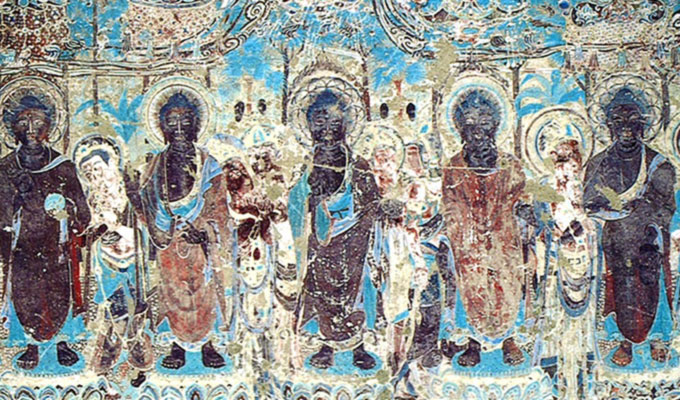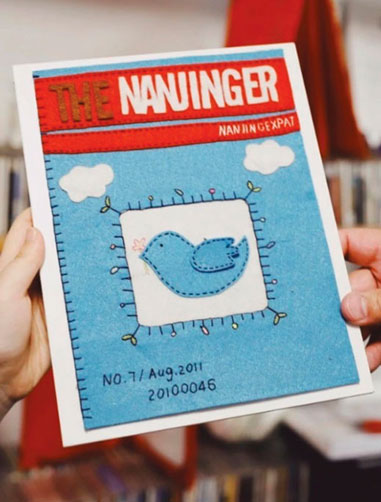Let me guess you’ve heard once or twice that the colour red in China is a symbol of happiness and good luck. Red packets stuffed with red banknotes shower China’s crimson clad brides as firecrackers ping and pop into a carpet of ruby confetti. Xi Jinping speaks against a backdrop of vermillion drapes and rippling red flags, but a stone’s throw from the scarlet washed walls of the Forbidden City.
The colour red in China comes in scores.
While the Romans used cinnabar, a highly toxic mineral, to rouge their villa frescos, China turned to iron-based pigments, which were equally poisonous. Even worse, as time goes on the iron oxidises, turning red hues into jet black. At the caves of Dunhuang in Gansu province, the effect is most peculiar. Buddhas and Bodhisattvas whose skin was once painted a light pink, instead look like they’ve hailed from Africa with dark skin on their faces and bodies.
From a change in colour to a change in perception, the Chinese concept of the colour red has not always been the same. What if I told you that the Forbidden City walls are in fact not red, but purple? That’s right, purple. The palace in Chinese is known as 紫禁城 (zijincheng), which literally means “Purple Forbidden City”. While the colour itself hasn’t changed, the maroon shade was known in imperial China as purple and was associated with the higher realms of the Celestial Emperor.
Red was a favourite colour of emperors who hoped its auspicious qualities would bring prosperity and success to their reign. More recently in China, red has strong political connotations and is associated with revolution and the Communist Party.
The red star is a symbol of communist ideology and featured heavily in the material culture of Mao’s China. It is used in the emblem of the People’s Liberation Army as well as the logo of China’s famous baijiu brand, Hongxing Erguotou. But I certainly wouldn’t associate a hangover from that stuff with happiness and joy!
On the contrary, in 1997 when Hong Kong was returned to China, the colour red was hastily covered up. Iconic red post boxes were lathered in shades of green and purple days after the British handover in an attempt to paint over the city’s colonial past.
The French who imported ceramics from China and desperately tried to imitate them, showed a particular preference for a lighter shade on the spectrum. They found rosy pink to have an exceptionally Oriental flavour. When the Chinese first saw the colour, they found it so peculiar that it was given the name “yangcai”, meaning “foreign colour”. They eventually adopted it to produce and sell famille rose porcelain back to Europe.
As for paintings, it has even been shown that those containing the colour red sell better at auction, and with Chinese buyers taking an increasingly large slice of the art market, their preference for the lucky colour is pushing up the value of this vibrant shade.
Today, the colour red might be the dreaded PM 2.5 number as it soars over 150, or the notice that tells you there will be construction on your building for the next 4 months. But while the fashion or function of red may always be changing in China, the colour most certainly looks set to stay.











